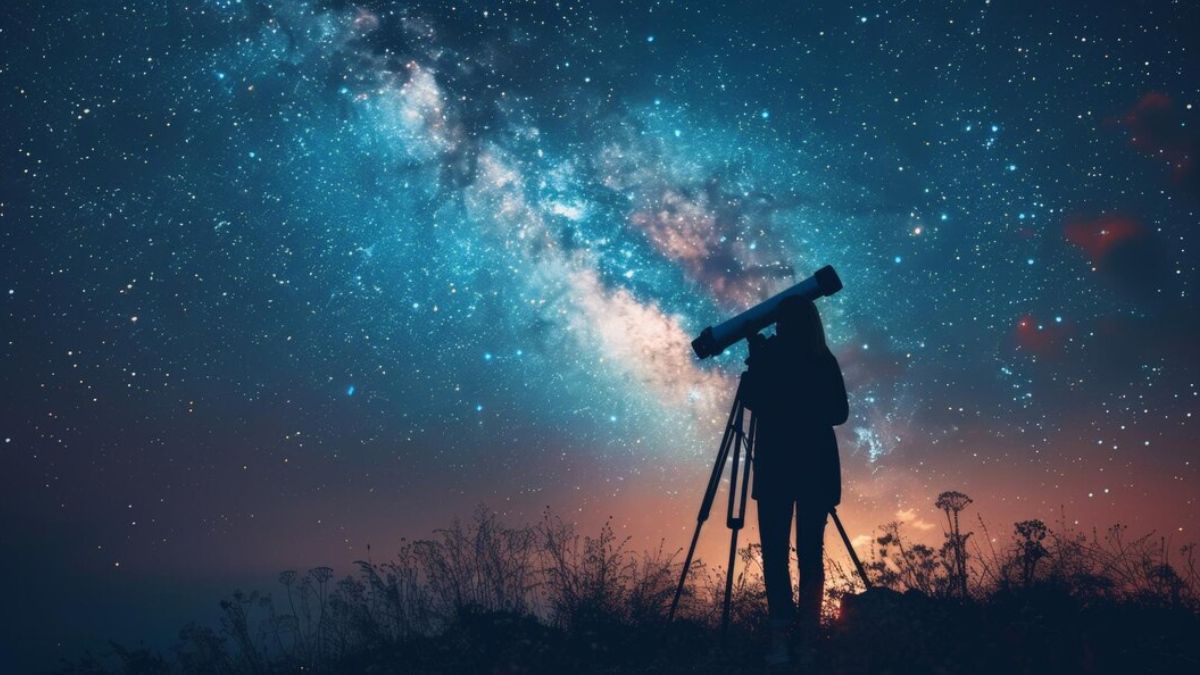Welcome to the captivating world of Stars-923, a celestial gem that has mesmerized astronomers and stargazers alike. Nestled in the vast expanse of our universe, this star offers not just breathtaking beauty but also a wealth of scientific knowledge waiting to be uncovered. From its unique characteristics to stunning images captured by advanced telescopes and satellites, there’s so much more than meets the eye. Join us as we embark on an exciting journey through the history, formation, and remarkable discoveries surrounding Stars-923. Prepare to be amazed!
History of Stars-923 and its discoveries
Stars-923 has a rich history that captivates astronomers and enthusiasts alike. First documented in the early 20th century, its brilliance caught the eye of researchers looking to explore the cosmos.
Over the decades, advancements in telescope technology unveiled more about this fascinating star. The introduction of spectroscopy opened new avenues for understanding its composition and behavior.
Significant discoveries emerged during key astronomical missions. Telescopes equipped with high-resolution cameras captured detailed images that showcased Stars-923’s unique qualities.
In recent years, collaborative efforts among global observatories have led to groundbreaking findings. These studies revealed insights into its age, temperature, and potential planetary systems surrounding it.
The ongoing exploration of Stars-923 continues to inspire curiosity within the field of astrophysics. Each discovery adds another layer to our understanding of this remarkable celestial body.
The Formation and Life Cycle of Stars-923
Stars-923, like all stars, begins its journey in a nebula. This vast cloud of gas and dust condenses under gravity’s pull. Over time, the core heats up as pressure builds.
Once it reaches a critical temperature, nuclear fusion ignites. Hydrogen atoms fuse to form helium, radiating energy that lights up Stars-923 for billions of years. This phase is known as the main sequence stage.
As it exhausts hydrogen in its core, Stars-923 undergoes changes. It swells into a red giant, expanding dramatically while shedding outer layers into space. What remains is a hot core—often leading to fascinating phenomena.
The final chapters are equally spectacular. Depending on its mass, Stars-923 may end as a white dwarf or explode as a supernova. Each step reveals more about our universe’s intricate tapestry and how stellar life shapes cosmic evolution.
Unique Characteristics and Features of Stars-923
Stars-923 stands out among its stellar peers due to its extraordinary luminosity. This star emits a brilliant light that can be observed even from vast distances, making it a beacon in the night sky.
Another fascinating feature of Stars-923 is its unique spectral classification. Its composition reveals an intriguing mix of elements, providing insights into nucleosynthesis processes ongoing within it.
The temperature gradient across Stars-923’s surface also adds to its allure. With zones exhibiting distinct thermal characteristics, scientists are eager to learn how these variations impact the star’s overall behavior and longevity.
Additionally, Stars-923 displays peculiar variability in brightness. These fluctuations provide clues about gravitational interactions with surrounding celestial bodies or potential eclipsing features within its system.
Researchers continue to explore these remarkable traits, hoping they will unlock deeper cosmic mysteries tied to Stars-923 and enhance our understanding of stellar evolution.
Images Captured by Telescopes and Satellites
The captivating beauty of Stars-923 has been immortalized through the lens of various telescopes and satellites. Each image tells a story, revealing intricate details that enhance our understanding of this remarkable star.
Telescopes such as Hubble have captured stunning visuals showcasing the luminous glow of Stars-923 against the backdrop of space. These images offer an awe-inspiring view, highlighting its brightness and surrounding celestial features.
Satellites equipped with advanced imaging technology provide even deeper insights. They can detect light signatures that are invisible to the naked eye, unveiling new dimensions in stars’ compositions.
These breathtaking photographs not only inspire wonder but also serve as invaluable tools for astronomers. By analyzing these images, researchers uncover vital information about Stars-923’s structure and behavior within its galaxy. The quest for knowledge continues as each snapshot adds another layer to our cosmic narrative.
Recent Discoveries and Studies on Stars-923
Recent studies on stars-923 have unveiled exciting new insights that challenge our previous understanding. Researchers have detected unusual spectral lines, hinting at the presence of rare elements within its atmosphere.
Moreover, an analysis conducted by a team from the Galactic Observatory revealed unexpected temperature fluctuations. These changes suggest dynamic atmospheric conditions not previously observed in similar stellar bodies.
Another fascinating discovery involves the potential for exoplanets orbiting stars-923. The ongoing search for planets has sparked interest among astronomers eager to explore possibilities for life beyond Earth.
As experts continue their investigations, advanced imaging techniques are providing clearer views than ever before. This enhanced perspective is paving the way for groundbreaking theories about stellar evolution and behavior.
Each finding adds another layer of complexity to our knowledge of stars-923, igniting curiosity across the scientific community and beyond.
What the Future Holds for Studying Stars-923
The future of studying Stars-923 is brimming with potential. Ongoing advancements in telescope technology will offer deeper insights into its composition and behavior.
Researchers are eager to unravel the mysteries hidden within this celestial marvel. Upcoming missions aim to gather more data, enhancing our understanding of its life cycle and evolution.
In particular, new spectroscopic techniques could unveil clues about the star’s atmosphere. These revelations may lead to exciting discoveries regarding exoplanets orbiting around it.
Moreover, collaborations across global observatories promise a wealth of shared knowledge. This collective effort might accelerate breakthroughs that were previously unattainable.
As we venture further into space exploration, Stars-923 remains a focal point for astronomers worldwide. Each observation brings us closer to grasping not just this star’s secrets but also the broader cosmos surrounding it.
Conclusion: Why Stars-923 is a Fascinating and Important Star to Study
Stars-923 stands out in the vast universe, capturing the attention of astronomers and enthusiasts alike. Its unique characteristics and fascinating history provide a window into stellar evolution and cosmic phenomena. Each discovery related to Stars-923 adds another layer of understanding about how stars form, live, and ultimately die.
The stunning images captured by advanced telescopes offer breathtaking views that inspire awe. They are not just beautiful; they hold clues to unraveling mysteries of our universe. Recent studies continue to shed light on this remarkable star, revealing insights that could redefine our knowledge of celestial bodies.
As technology advances, our ability to study Stars-923 will only improve. Future missions may yield even more extraordinary findings about this intriguing star. The importance of studying Stars-923 cannot be overstated; it serves as a crucial piece in the puzzle of our cosmos.
Engaging with such wonders encourages curiosity and deepens our appreciation for the night sky above us. Exploring Stars-923 is more than a scientific endeavor; it’s an invitation to marvel at the beauty and complexity surrounding us in space.
FAQS
1. What is “A Visual Guide to Stars-923: Stunning Images and Discoveries”?
“A Visual Guide to Stars-923: Stunning Images and Discoveries” is a comprehensive visual guide that explores the universe through stunning photographs and illustrations of stars, galaxies, and cosmic phenomena. It features detailed explanations of astronomical discoveries and the latest research findings, making it accessible to both amateur stargazers and seasoned astronomers.
2. What kind of content can I expect in this guide?
The guide includes:
- High-resolution images of stars, galaxies, nebulae, and other celestial objects.
- Detailed descriptions and explanations of each image.
- Insights into recent astronomical discoveries and technological advancements.
- Informative articles on various topics related to astronomy and astrophysics.
- Interactive elements, such as QR codes linking to videos or additional resources.
3. Is this guide suitable for beginners?
Yes, the guide is designed to be accessible to readers of all levels. It provides clear explanations and easy-to-understand descriptions of complex astronomical concepts. For beginners, there are introductory sections that cover basic astronomy principles, while more advanced sections cater to experienced enthusiasts.
4. How are the images in the guide obtained?
The images are sourced from a variety of prestigious observatories, space agencies, and professional astronomers. They include both ground-based and space-based telescope images. The guide also features artistic renderings and simulations to illustrate concepts that are not easily captured in photographs.
5. Are there any interactive or digital components included?
Yes, the guide includes several interactive elements. QR codes scattered throughout the book link to online resources, such as videos, 3D models, and virtual tours of observatories. These components are designed to enhance the reader’s experience and provide a more immersive learning environment.
6. How often is the guide updated?
The guide is a snapshot of current knowledge and discoveries at the time of publication. While it is not updated regularly, new editions may be released to include the latest astronomical findings and advancements in imaging technology. Check with the publisher for information on future editions or updates.
7. Can I use this guide as a reference for academic purposes?
Yes, the guide can be used as a reference for academic purposes, though it is primarily designed for general readership. For academic work, you may want to supplement it with peer-reviewed articles and primary sources. The guide provides references and further reading suggestions that can be helpful for deeper research.
8. Where can I purchase “A Visual Guide to Stars-923”?
The guide is available for purchase through major book retailers, online bookstores, and directly from the publisher’s website. It may also be available in some local bookstores and libraries. Check the publisher’s website for information on availability and purchasing options.
9. Is there a digital version of the guide available?
Yes, a digital version of the guide is available for purchase and download. It is compatible with various e-readers and tablets. The digital version includes interactive features that are not available in the print edition.
10. How can I provide feedback or ask questions about the guide?
You can provide feedback or ask questions through the publisher’s website or by contacting their customer service. Many guides also have a dedicated section for reader feedback, which can be found on the publisher’s or author’s website.











